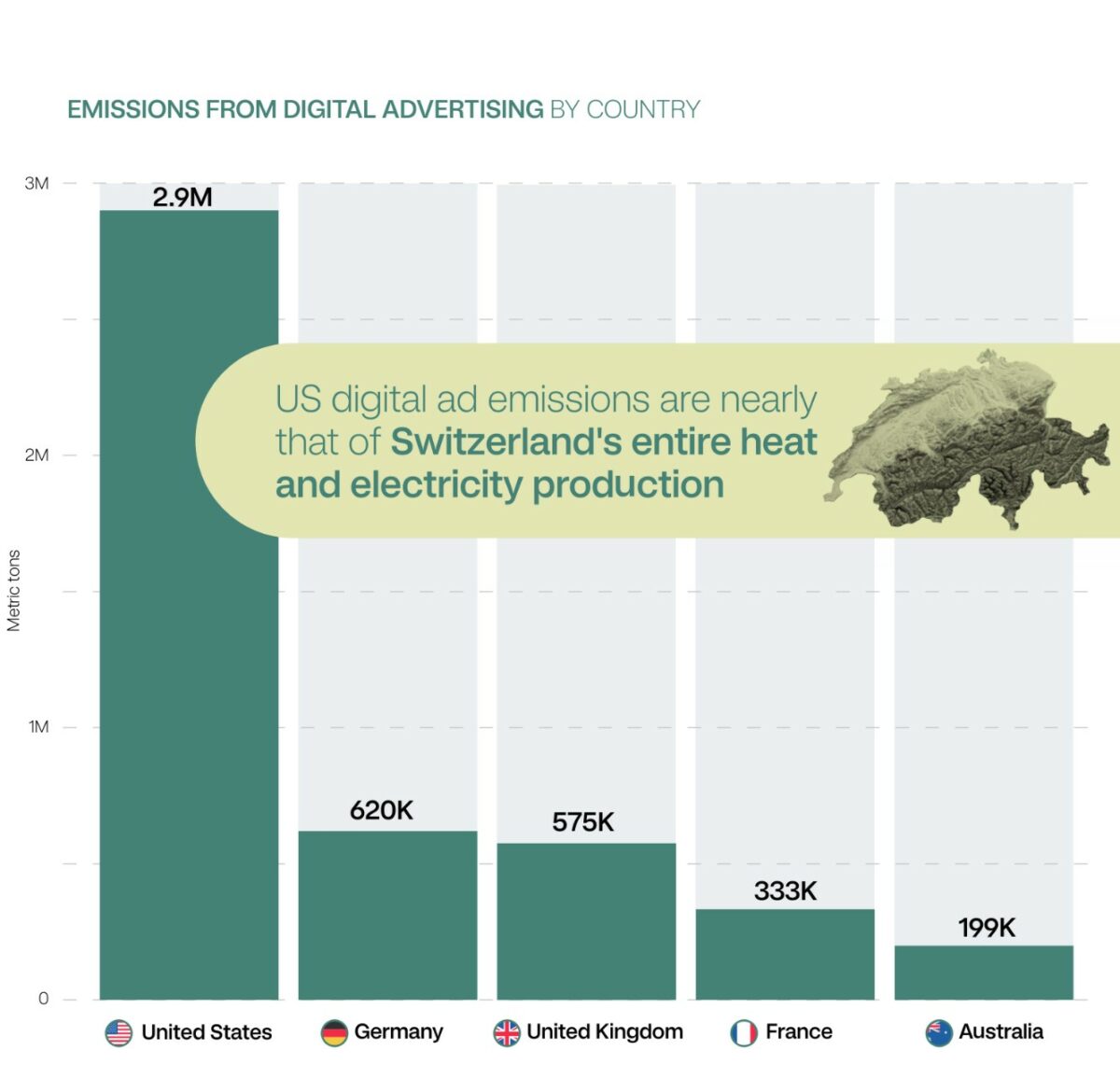Carbon emissions from streaming and displaying digital advertising are the same as the amount used to power 1.4 million US homes for a year, according to Scope3’s latest report into the environmental impact of digital waste.

The State of Sustainable Advertising Report highlighted the startling carbon contribution from digital ad emissions.
The data for this quarter revealed that, from the trillions of digital ad impressions processed every year, digital advertising emits 7.2 million tonnes of CO2 annually. Display ads contribute 3.8 million tonnes, while streaming adds 3.4 million tonnes.
While grams of carbon dioxide per mile (gCO2PM) dropped slightly for display advertising, this is because consumer device emissions have been removed from total emissions, rather than an improvement in the sector’s response to digital waste.
In addition, the report found that despite countries like India, the US and the UK lead digital advertising emissions, a much higher than average share of emissions come Sweden and Denmark, where total country CO2 emissions are lower.
Subscribe to Marketing Beat for free
Sign up here to get the latest marketing news sent straight to your inbox each morning
Urging the advertising industry to focus on the ‘big picture’, the report points out that eliminating carbon from wasteful practices prevents total emissions from spiralling out of control. A significant percentage of advertising emissions fall into the category of “emissions that can more readily be eliminated”.
“Some 94% of the total solution to curbing the climate crisis is cutting emissions, and emissions cuts that start in the 202s make up 75% of what’s needed to meet existing climate goals,” commented Dr John Foley.
The report also highlights that emissions from streaming video are much higher, due to the distribution and rendering of media. Alluding to further clarity in later reports, the study explains that it is a granular measurement which is essential for understanding a channel’s contribution to industry emissions.
The data follows in the wake of a recent report in which marketers revealed that poorly used and overly-complicated MarTech and AdTech platforms were leading to multiple digital systems being used and so creating more digital waste.









